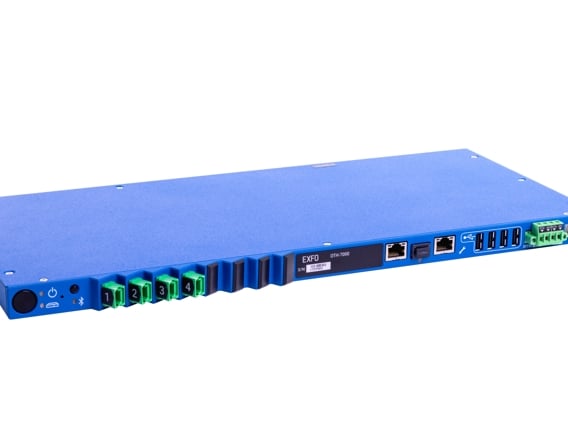Resources
All resources
User manual
FIP-400B Fiber Inspection Scope and ConnectorMax2 - English
(June 30, 2025)
User manual
OTH-7000 - English
(June 13, 2025)
User manual
OTH-7000 - Français
(June 13, 2025)
User manual
OTH-7000 - Español
(June 13, 2025)
User manual
OTH-7000 - Deutsch
(June 13, 2025)
Infobrief
Centralized FTTx Testing Case Study - Hyperoptic - English
(February 22, 2023)
Infobrief
Centralized FTTx Testing Case Study - Hyperoptic - Deutsch
(February 22, 2023)
Flyers and pamphlets
RFTM for faster network monetization - English
(February 28, 2024)
Flyers and pamphlets
RFTM for faster network monetization - 中文
(February 28, 2024)
Flyers and pamphlets
RFTM for faster network monetization - Deutsch
(February 28, 2024)
Flyers and pamphlets
RFTM for faster network monetization - Français
(February 28, 2024)
Brochures and catalogs
Remote fiber testing and monitoring (RFTM) - English
(October 25, 2024)
Brochures and catalogs
Remote fiber testing and monitoring (RFTM) - Deutsch
(October 25, 2024)
Brochures and catalogs
Remote fiber testing and monitoring (RFTM) - Français
(October 25, 2024)
Flyers and pamphlets
Data center test solutions - English
(January 24, 2023)
Flyers and pamphlets
Data center test solutions - 中文
(January 24, 2023)
Flyers and pamphlets
Data center test solutions - Deutsch
(January 24, 2023)
Flyers and pamphlets
Data center test solutions - 日本語
(January 24, 2023)
Flyers and pamphlets
FIP-500 – Spot on, every time. Fastest and most reliable fiber inspection. - English
(January 23, 2023)
Flyers and pamphlets
FIP-500 – Spot on, every time. Fastest and most reliable fiber inspection. - 中文
(January 23, 2023)
Flyers and pamphlets
FIP-500 – Spot on, every time. Fastest and most reliable fiber inspection. - Deutsch
(January 23, 2023)
Flyers and pamphlets
FIP-500 – Spot on, every time. Fastest and most reliable fiber inspection. - 日本語
(January 23, 2023)
User manual
FIP-500 Fiber inspection scope - English
(June 04, 2025)
User manual
FIP-500 Fiber inspection scope - Français
(June 04, 2025)
User manual
FIP-500 Fiber inspection scope - Español
(June 04, 2025)
User manual
FIP-500 Fiber inspection scope - Deutsch
(June 04, 2025)
User manual
FIP-500 Fiber inspection scope - 中文
(June 04, 2025)
Reference posters
FTTx PON testing - English
(November 19, 2021)
Reference posters
FTTx PON testing - Français
(November 19, 2021)
Reference posters
FTTx PON testing - 中文
(November 19, 2021)
Reference posters
FTTx PON testing - Español
(November 19, 2021)
Reference posters
FTTx PON testing - Deutsch
(November 19, 2021)
Reference posters
FTTx PON testing - Italiano
(November 19, 2021)
User manual
OTDR 2 - Português
(June 30, 2025)
User manual
OTDR 2 - English
(June 30, 2025)
User manual
OTDR 2 - Français
(June 30, 2025)
User manual
OTDR 2 - Español
(June 30, 2025)
User manual
OTDR 2 - Deutsch
(June 30, 2025)
User manual
OTDR 2 - 中文
(June 30, 2025)





















